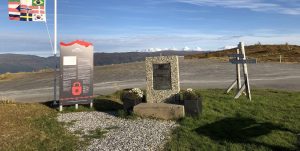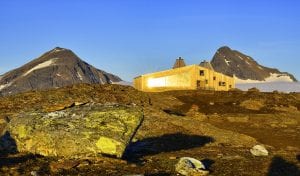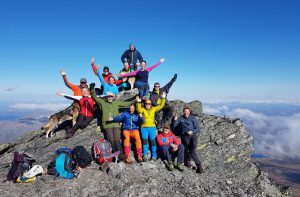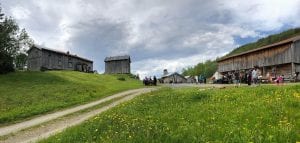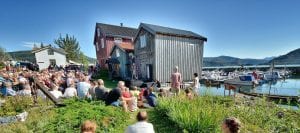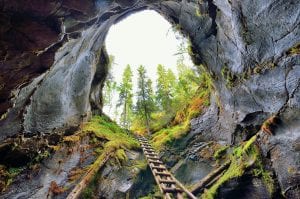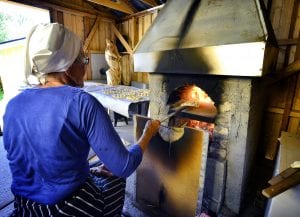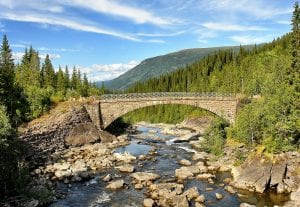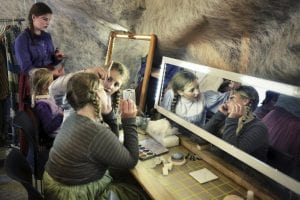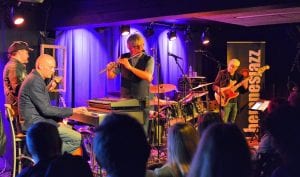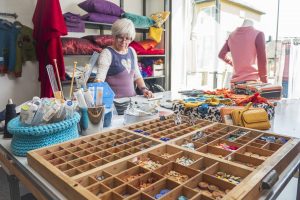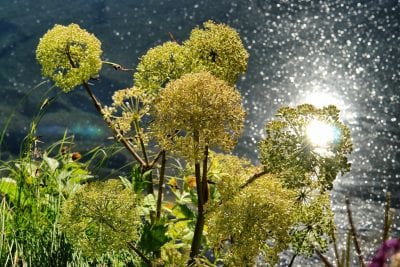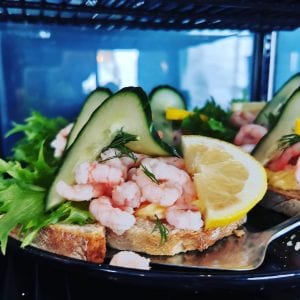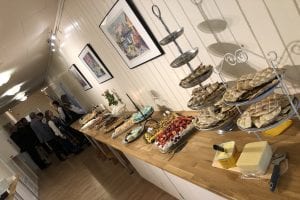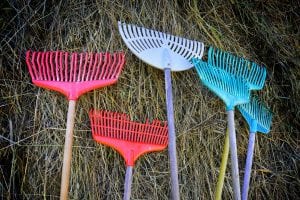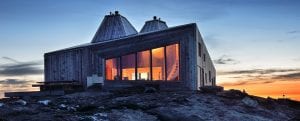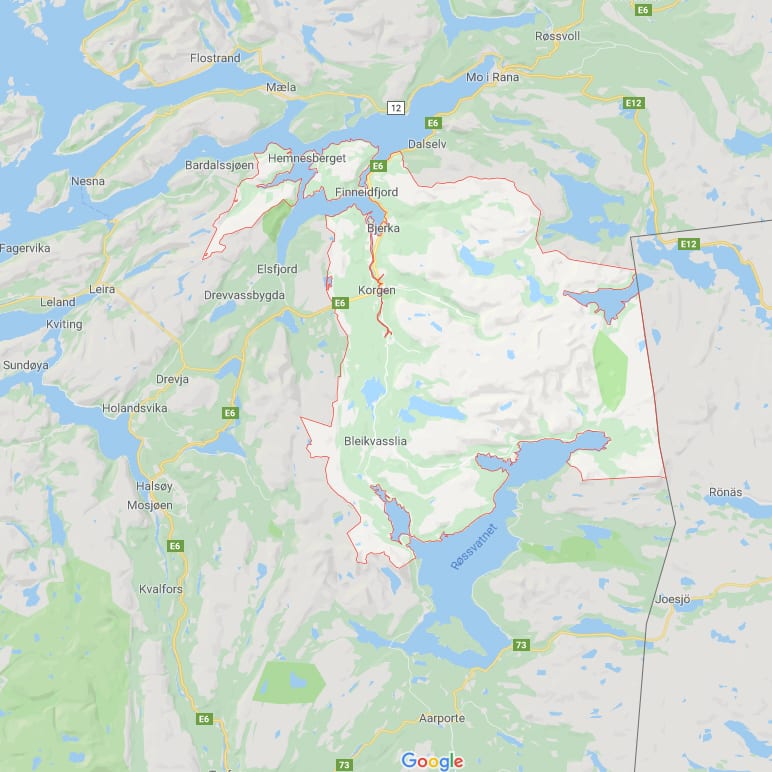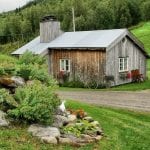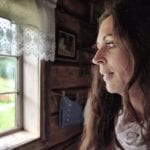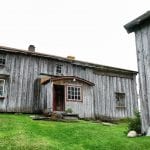Like many Norwegian farms, it was supported a larger estate. Only in 1885 did actual ownership pass from Jørgen Olaus Walnum to the Inderdal family. They once raised chicken, sheep, pigs, horses and even reindeer. Today there is no livestock at Inderdalen Farm, but the fields are well kept, and hay is cut for the animals of the community’s cooperative farm, where their cows are now kept.
Inderdalen Farm comprises large forests that have always been important to the livelihood of the farm. The renowned Rabothytta cabin was built using quality spruce from Inderdalen. Cladding cut from the large mountain spruce, which is dense and grows slowly, was perfect for this unique cabin perched at the edge of the glacier.
In the 18th century, bear and wolf were often seen in the mountains of Okstindan. Otten Andersen is said to have shot 24 bears, and because it took time to reload his rifle, he carried a special spear to defend himself in case of attack. You can see such a bear spear on our farm. During the historical play, Klemetspelet, it is used as a prop.
For many generations, Inderdalen Farm maintained an agreement with Sámi herders, who cared for the farm’s reindeer as part of the larger flock they herded. In return, the farm provided shelter and accommodation when winter in the mountains became too harsh.
Astrid Langjord played a decisive role in the design of the Nordland bunad, the regional variant of the traditional Norwegian costume. Born in 1885, she was the grandchild of John Ottensen of Inderdalen. She is honoured with a monument in Mosjøen.
In 2019, Inderdalen Farm received the Cultural Landscape Award for their praiseworthy work to preserve the farm and the surrounding infields and outfields. Click on the link to the right to see a presentation that was made on the occasion of this award.

